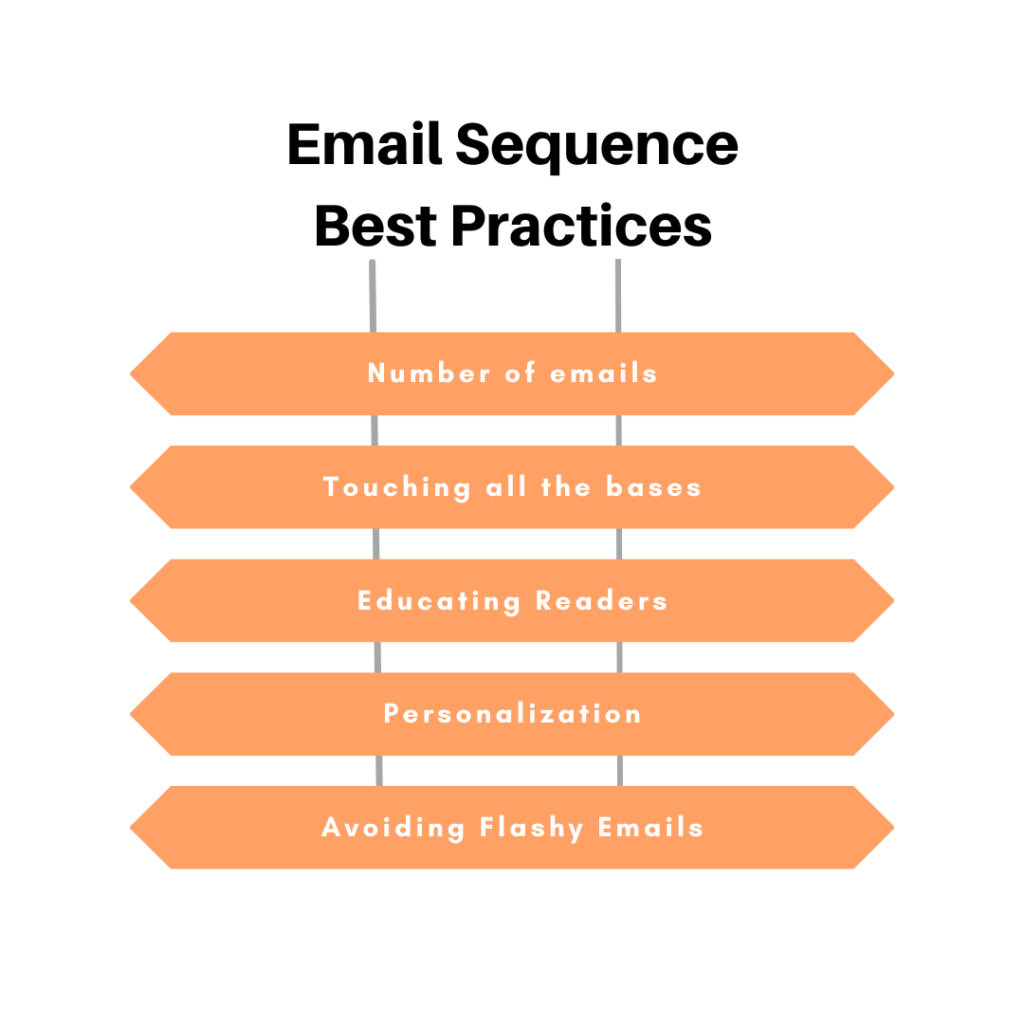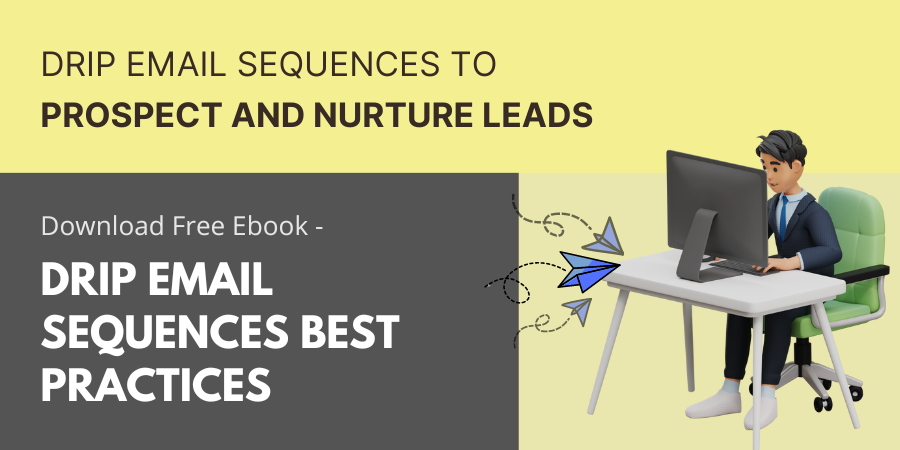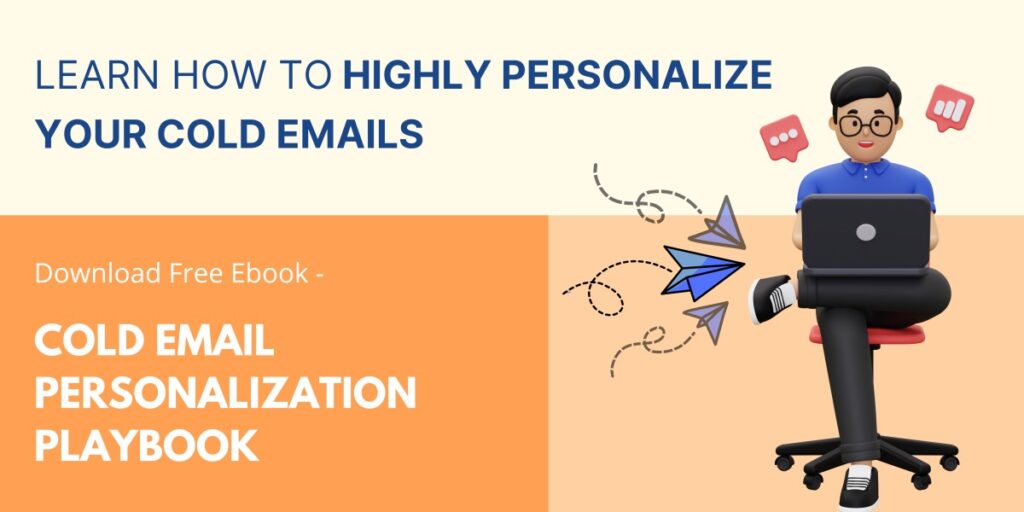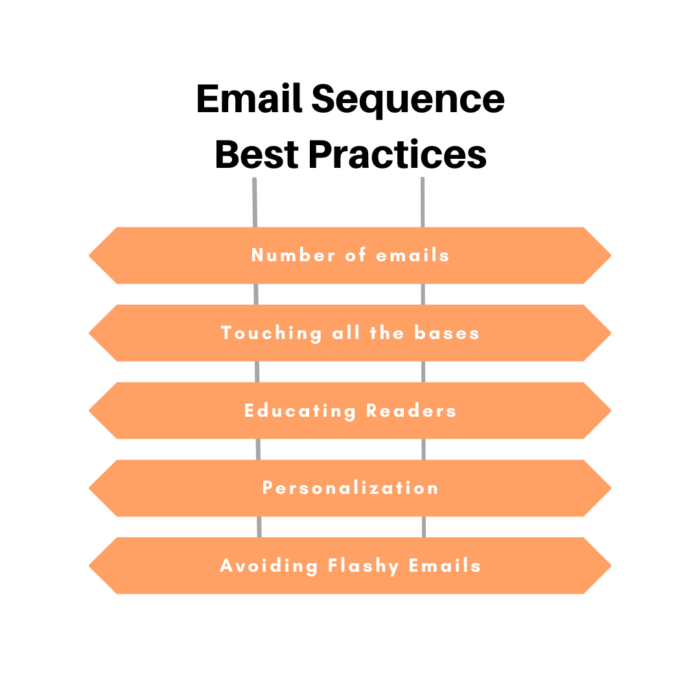Email sequences are a powerful tool for building relationships with your audience, nurturing prospects, and converting customers. However, it may seem like a daunting task for most of you.
But no worries, there are several best practices that can help you craft an effective email sequence.
Whether you want to nurture prospects or convert customers, this guide will walk you through the process of planning, writing, and optimizing your email sequence.
So, let’s begin.
Email sequence best practices

1. Determine the appropriate number of emails in the sequence:
The number of emails in an email sequence will basically depend on the specific goals of the campaign, the complexity of the message, and the preferences of your target audience.
If your goal is to nurture prospects and convert them into customers, a typical email sequence might consist of 5-7 emails spread out over a period of 2-3 weeks.

However, if you aim to onboard new customers, your email sequence might be longer and include more detailed information about your product or service.
In such a case, your sequence might consist of 10-12 emails spread out over a period of several weeks or even months.
As a general thumb rule, keep in mind that too many emails can overwhelm your readers and lead to unsubscribes, while too few emails may not provide enough information to convert readers into customers.
A good approach is to use data and analytics to track the performance of your emails and adjust the length of your sequence as needed.

2. Touch all the bases:
Email sequences are greatly beneficial. However, if your company offers multiple services, it can be challenging to know which service your customers are interested in.
Hence, you need to create an email sequence promoting all your services step-by-step. This will help you raise awareness about all your services and know more about your customers.
So make sure to cover all the important points related to the message or services you are trying to promote and map out the sequence in a logical order.
3. Educate readers:
Building trust is an essential aspect of any successful marketing strategy, especially when it comes to email marketing. Without trust, customers are unlikely to engage with your messages. This can result in low open rates, click-through rates, and conversions.
Hence it is crucial to establish trust and you can do it by educating your readers through email messages.
Provide them with relevant information that is easy to understand and actionable. This can include tips, how-to guides, case studies, and other resources that provide value to your readers.
By doing so you can build a strong relationship with your audience and increase the likelihood of them becoming customers.
4. Personalize emails and workflows:
Personalization is a key factor in the success of email sequences. In fact, companies that get it right generate 40 % more revenue states the stats from Exploding Topics.
With each email sent, you will know more about your recipients’ interests and needs.
Use this data to send more personalized emails through your email sequences. This will help you drastically increase your engagement rate.
You can also personalize the workflow of your email sequence. This can include using triggers and automation to send emails at specific times and intervals based on the recipient’s actions or behaviors.

5. Avoid flashy emails:
Flashy and overly-designed cold emails may seem like a good way to grab attention. However, emails containing a lot of images and HTML may land in spam.
So, if you want to maximize email deliverability, you need to minimize the HTML and images in your emails.
Instead, use a clear and consistent design that reflects your brand’s style and voice.
Conclusion:
Email sequences are a great way to boost conversions. However, it is essential to get a grasp of best practices to run successful campaigns.
By following the above-mentioned email sequence best practices, you can create effective email sequences that build relationships, drive conversions, and ultimately achieve your marketing goals.


Leave a Reply